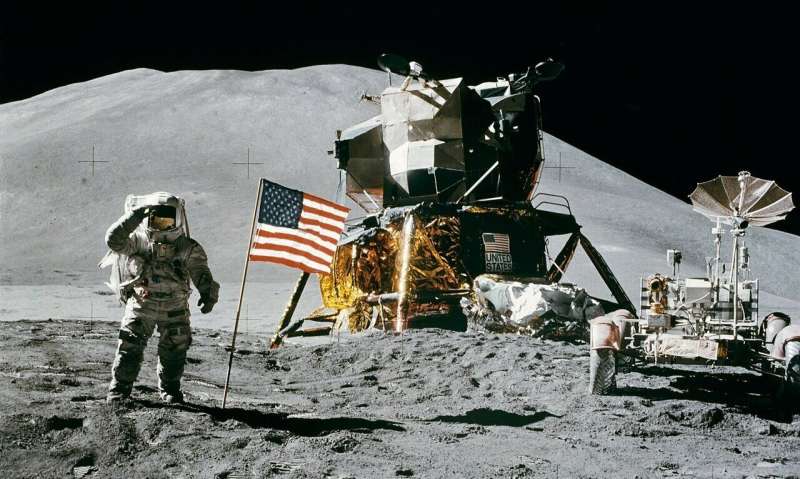Credit: Pixabay/CC0 Public Domain
James Meador, an independent researcher at the California Institute of Technology, has found evidence that suggests the Apollo 11 ascent stage may still be orbiting the moon. He has written a paper outlining his research and findings and has posted it on the arXiv preprint server.
In 1969, NASA astronauts Neil Armstrong and Buzz Aldrin made history when they landed a craft successfully on the moon. After more than 21 hours on the surface, the astronauts blasted off the surface in a part of the Eagle lander called the ascent stage. They soon thereafter rendezvoused with Michael Collins in the command module which carried them back to Earth. Before departing for Earth, the ascent stage was jettisoned into space—NASA engineers assumed that it would crash back to the moon's surface sometime later. Meador reports that the ascent stage may not have crashed into the moon after all and might, in fact, still be orbiting the moon.
Meador began his investigation by considering whether it might be possible to find the ascent stage, which he assumed would be on the surface of the moon. He noted that NASA had sent spacecraft into orbit around the moon in 2012 as part of the GRAIL project to map the moon's gravitational field. That suggested he should be able to track the ascent stage's descent to the moon using a tool created by NASA called the General Mission Analysis Tool, which can be used to map spacecraft trajectories around planets or moons when their gravitational field is known.
After adding data from GRAIL, Meador ran the simulation multiple times using different parameters to simulate conditions that likely existed from the time when the ascent was jettisoned on up to the present. He also included data to take into account gravity from the sun and the other planets (except Mercury) and data describing forces due to solar radiation. He found that all of his simulations showed the ascent stage maintaining a steady orbit.
Meador acknowledges that other factors could have led to the demise of the craft—its remaining fuel could have exploded as the craft degraded, for example, changing its orbit. But he also notes that if the agency chooses to look for it, NASA possesses the technology needed to find the craft if it is still in orbit.
More information: James Meador, Long-term Orbit Stability of the Apollo 11 Eagle Lunar Module Ascent Stage, arXiv:2105.10088v1 [physics.space-ph] arxiv.org/abs/2105.10088
© 2021 Science X Network
























